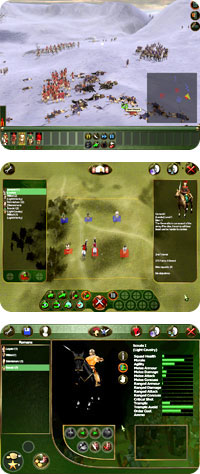By Brad Cook
“Rome wasn’t built in a day,” the old cliché goes, but you can accomplish that feat anyway with Legion Arena. Guide the Romans from the early days of the republic to the dawn of their empire before switching to the point-of-view of the Celtic people, who raided much of western Europe before finding themselves at odds with the Romans.

Each of the over 100 battle scenarios in the game requires you to assume the role of military commander and plan your strategy. Then unleash your troops and watch the battle unfold. You can issue orders to your men during the action, but each command depletes a meter; if it hits zero, you must wait for it to be replenished. Those who prefer to remove that restriction can enable arcade mode.

Denari and Fame: Currency For Success
Each battle earns you fame, as well as currency known as Denari. Spend some of both to recruit more soldiers for your army, as well as buy better equipment for your existing troops. While you begin each campaign with a basic complement of men, your accumulation of fame and wealth gives you access to more powerful infantry, including soldiers who ride elephants.
Success on the battlefield also enables you to upgrade your soldiers between battles. You can increase their abilities in a number of offensive and defensive areas, as well as boost their morale or their basic physical limits. Many of the upgrades provide foundations for even better improvements later in the game.
The Army Camp screen, where you’ll find the aforementioned features, also allows you to view each of your squad’s statistics as well as its battle history. You can also disband squads that don’t serve a useful purpose anymore; you’ll receive a few Denari as compensation when you do so.
Plan For Victory
After you’ve upgraded your military, but before you begin the next battle, plan your strategies on the deployment screen. Study the enemy’s position and then place your squads accordingly; remember to line your strongest troops across from his weakest, taking the terrain into account. You should also consider what your opponent might do and plan for that contingency.
Issue orders to each squad, commanding them to, for example, wait for a while before advancing, or to outflank the enemy and attack them from the side. Decide on a formation for each squad; you will gain access to more complex formations, such as the wedge, as you progress through the game. Finally, you may want to create up to five waypoints for each unit, directing them in a specific manner around the battlefield. Without waypoints to guide them, they will simply march straight ahead, unless you’ve selected a flanking order.
Once you’ve launched the battle, you can scroll around the battlefield and zoom in and out to get the best vantage point on the action. Issuing timely orders becomes crucial, especially if the enemy inflicts heavy casualties. Unless you have arcade mode enabled, save those order points for the right moments.
Assuming you emerge victorious, move on to the next scenario in the campaign. Once you’ve gotten the hang of the game, you can challenge a friend to play against you over a LAN or the Internet, via GameSmith. Then you can truly declare a worldwide empire as your own.


